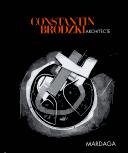| Listing 1 - 5 of 5 |
Sort by
|
Book
ISBN: 2870098596 9782870098592 Year: 2004 Publisher: Sprimont Mardaga
Abstract | Keywords | Export | Availability | Bookmark
 Loading...
Loading...Choose an application
- Reference Manager
- EndNote
- RefWorks (Direct export to RefWorks)
Dissertation
Abstract | Keywords | Export | Availability | Bookmark
 Loading...
Loading...Choose an application
- Reference Manager
- EndNote
- RefWorks (Direct export to RefWorks)
Dissertation
Abstract | Keywords | Export | Availability | Bookmark
 Loading...
Loading...Choose an application
- Reference Manager
- EndNote
- RefWorks (Direct export to RefWorks)

ISBN: 2870098588 9782870098585 Year: 2004 Publisher: Sprimont Mardaga
Abstract | Keywords | Export | Availability | Bookmark
 Loading...
Loading...Choose an application
- Reference Manager
- EndNote
- RefWorks (Direct export to RefWorks)
Architecte, urbaniste et designer d’origine polonaise, Constantin Brodski, né à Rome en 1924, a fait ses études d’architecture à Bruxelles et s’est formé à New-York, après la seconde Guerre Mondiale. Il a réalisé en Belgique une œuvre significative qui se distingue dans la production du Modernisme des années 50 à 90, par sa rigueur et son caractère anticipateur.
Brodzki, Constantin --- Architecture --- History --- Histoire --- Brodzki, Constantin, --- Architecte --- Architecture moderniste --- Belgique --- Thèses et écrits académiques --- Architecture - Belgium - 20th century. --- Thèses et écrits académiques --- BRODZKI Constantin
Dissertation
Year: 2021 Publisher: Leuven KU Leuven. Faculteit Letteren
Abstract | Keywords | Export | Availability | Bookmark
 Loading...
Loading...Choose an application
- Reference Manager
- EndNote
- RefWorks (Direct export to RefWorks)
In 2013, China revealed the Belt and Road Initiative (BRI) to the world. Portrayed as a worldwide development strategy that aims to connect China with the world, it is meant to become the modern equivalent of the ancient Silk Road. Improving trade and exchanging ideas with the rest of the world is the focus of the initiative. The BRI is an enormous project that consists of different smaller projects which are scattered geographically over the world, each with their own focus. One of those projects is the China Railway Express (CRE), a land bridge which aims to connect the Chinese inland provinces with Europe via railway connections. These long distance railway lines are to be used to transport cargo from China to Europe or vice versa. In 2021, lots of planned railway connections between China and Europe have become a reality. Cargo can be transported from the inland provinces of China to various European cities. One of these connections starts in the Chinese city of Chengdu and ends in Tilburg, a Dutch city near the border with Belgium. The research of this paper attempts to analyse the strengths and weaknesses of this railway connection to answer the question: “Does the China Railway Express present an opportunity for Belgian companies?”. The CRE could be a mode of transport to be considered for Belgian companies who have supply chains in China. First the existing information gap on costs, pricing and transit time of the connection is bridged. This is accomplished using information obtained from interviews with various entities that are involved in the CRE. Second, the connection is compared with a competing maritime trade route between the port of Shanghai and the port of Antwerp to determine what the possibilities for adopting the railway connection in a supply chain are. Data obtained from the TPR Chain Cost Model, developed by professor Edwin van Hassel, is used to calculate possible transportation chains between China and Europe. The results show that the usefulness of the railway connections depends on the specific situation of a certain company and its location relative to the railway terminal. However, some general strengths and weaknesses of the train connection could be determined. The strengths of the connection lie in its stable prices during the Covid-19 crisis, its cheap prices for exporting cargo to China, its short transit time, its access to Chinese inland provinces and lastly its potential positive effects on the environment. Its weaknesses consist of unpredictable future prices, a problem with the limit of the capacity and a debate on the political consequences the connections might bring for Europe. In conclusion, there is certainly an opportunity for Belgian companies eto consider adopting the railway connections into their supply chains, but the size of that opportunity depends on each company’s specific situation.
| Listing 1 - 5 of 5 |
Sort by
|

 Search
Search Feedback
Feedback About UniCat
About UniCat  Help
Help News
News